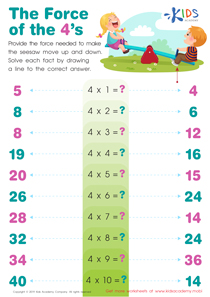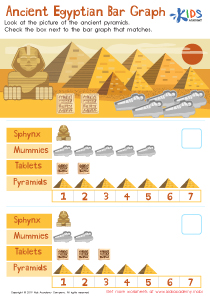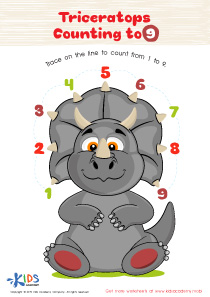Shape Recognition Easy Geometry Worksheets for Ages 3-9
17 filtered results
-
From - To
Discover our Shape Recognition Easy Geometry Worksheets, designed for children ages 3-9. Our engaging activities introduce young learners to basic geometry concepts by helping them identify and distinguish between various shapes. Perfect for early education, these worksheets enhance fine motor skills, encourage critical thinking, and boost visual-spatial intelligence. With intuitive designs and fun exercises, children effortlessly learn to recognize and name shapes like circles, squares, triangles, and more. Ideal for both classroom settings and at-home learning, our worksheets make mastering geometry an enjoyable adventure! Explore today at Kids Academy.


Cone Hide-and-Seek Worksheet
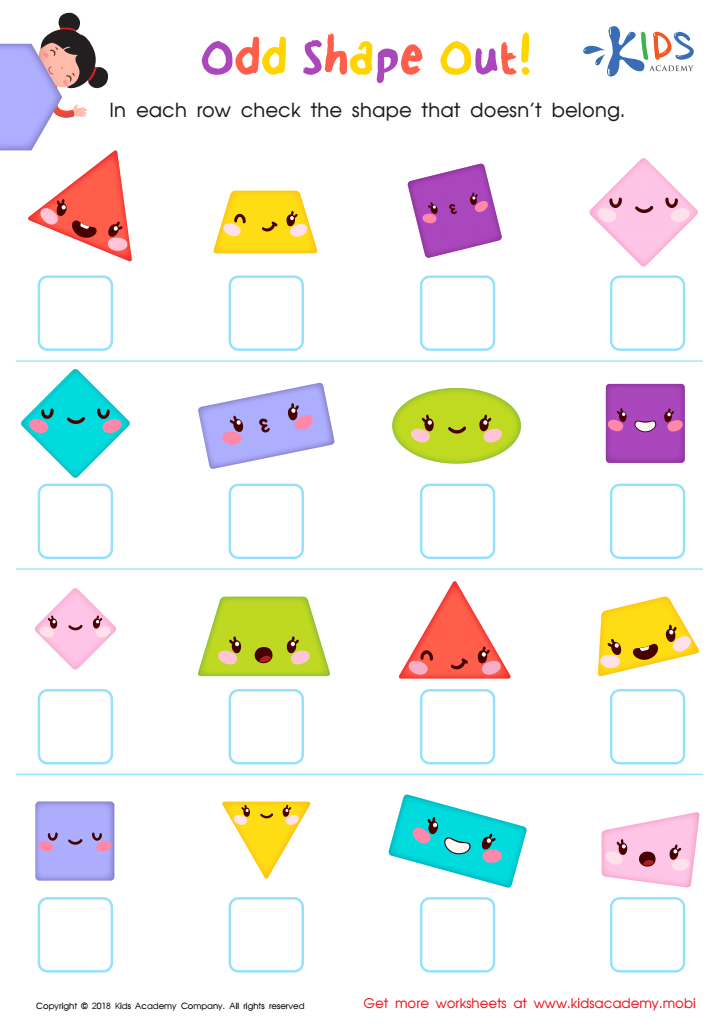

Odd Shape Out Worksheet for Grade 3
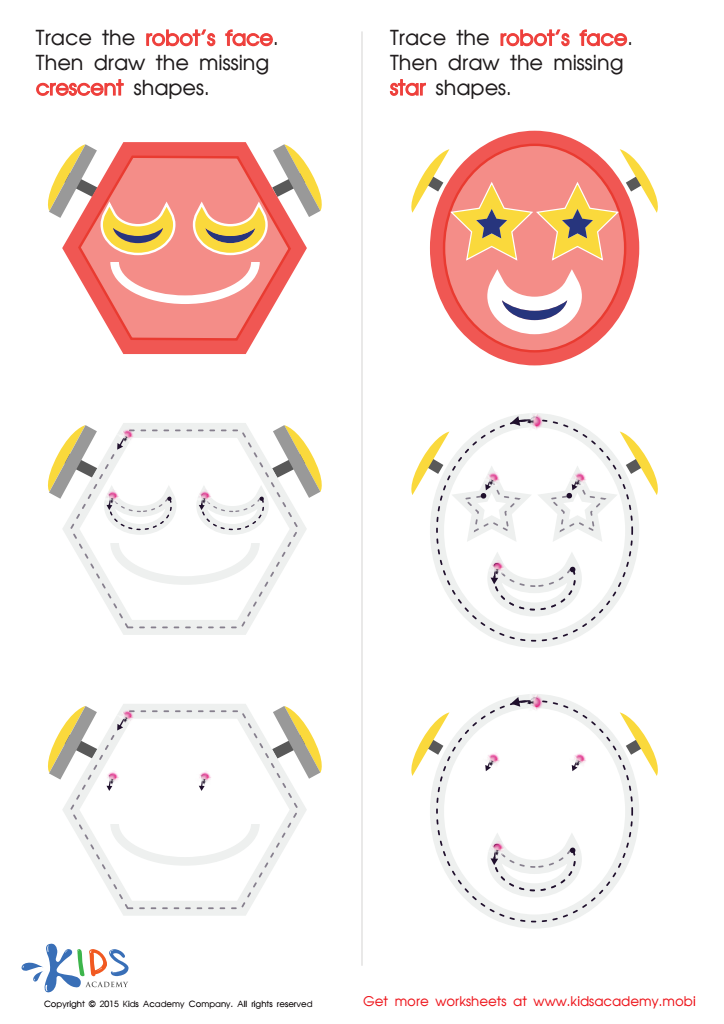

Composing a Robot's Face of Crescents And Stars Worksheet
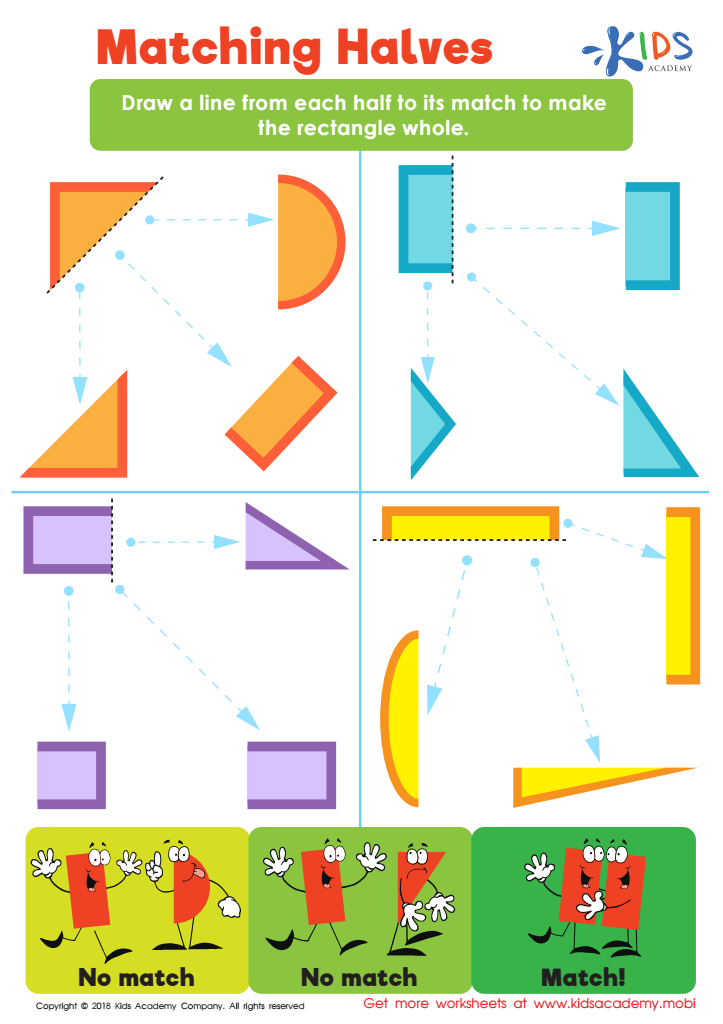

Matching Halves Worksheet
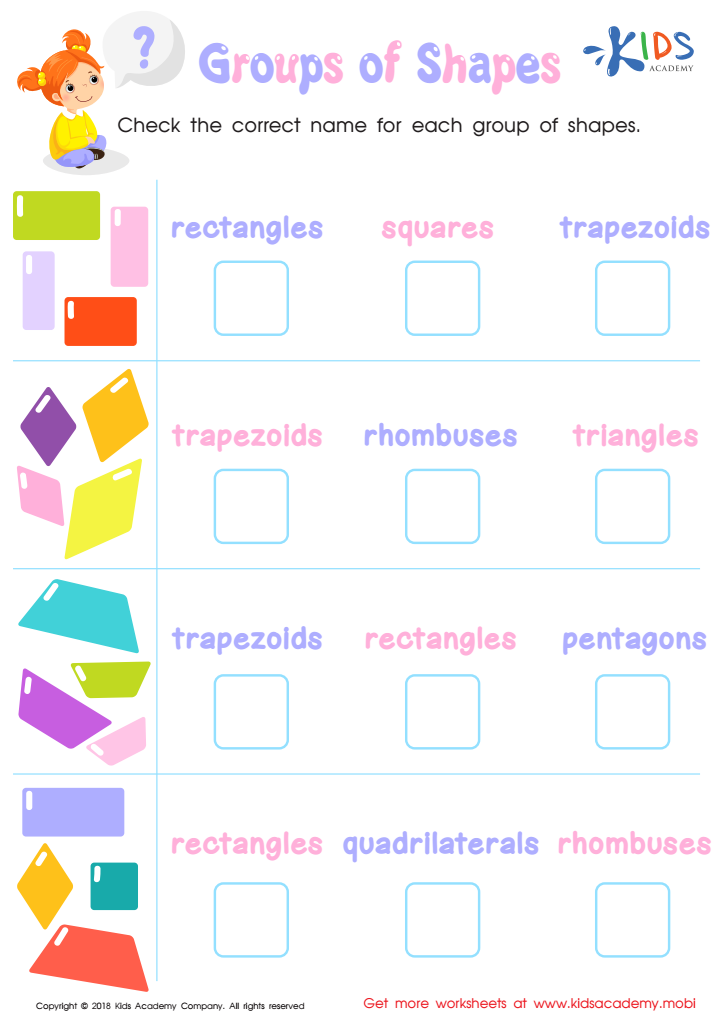

Groups of Shapes Worksheet


Faces of 3D Shapes Worksheet
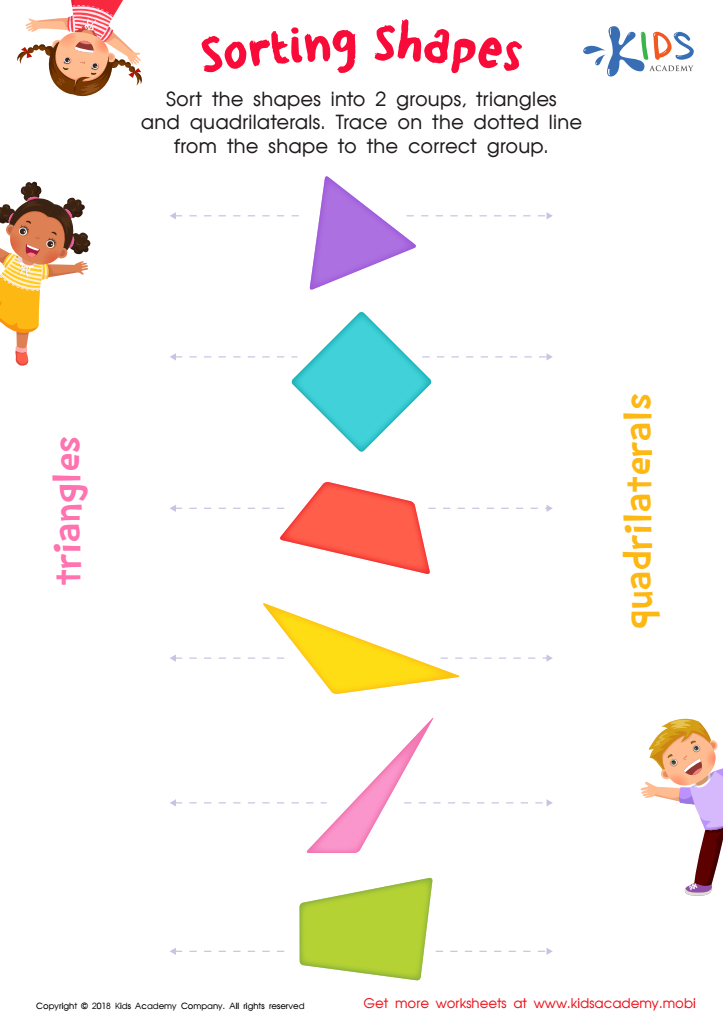

Sorting Shapes Worksheet
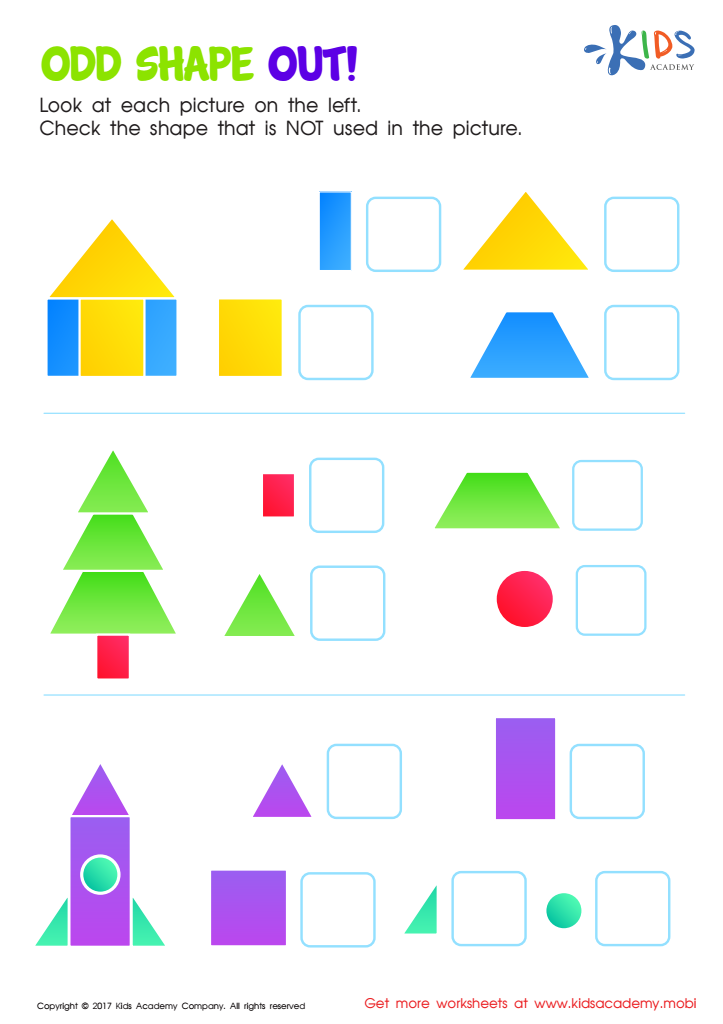

Odd Shape Out Worksheet for Grade 1
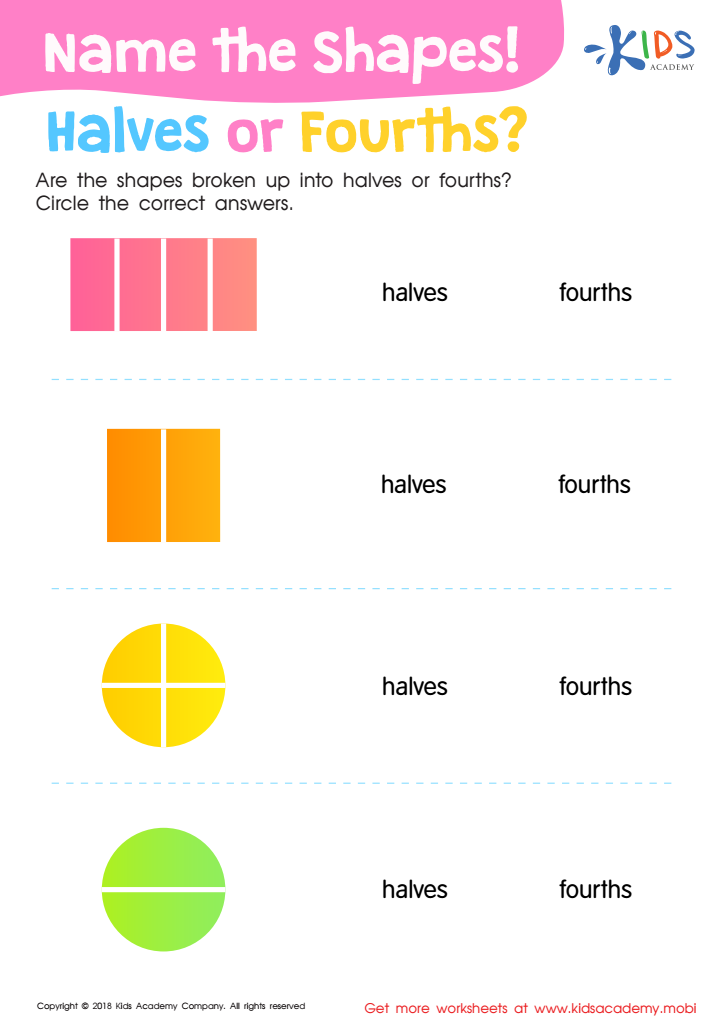

Name the Shapes Halves or Fourths? Worksheet
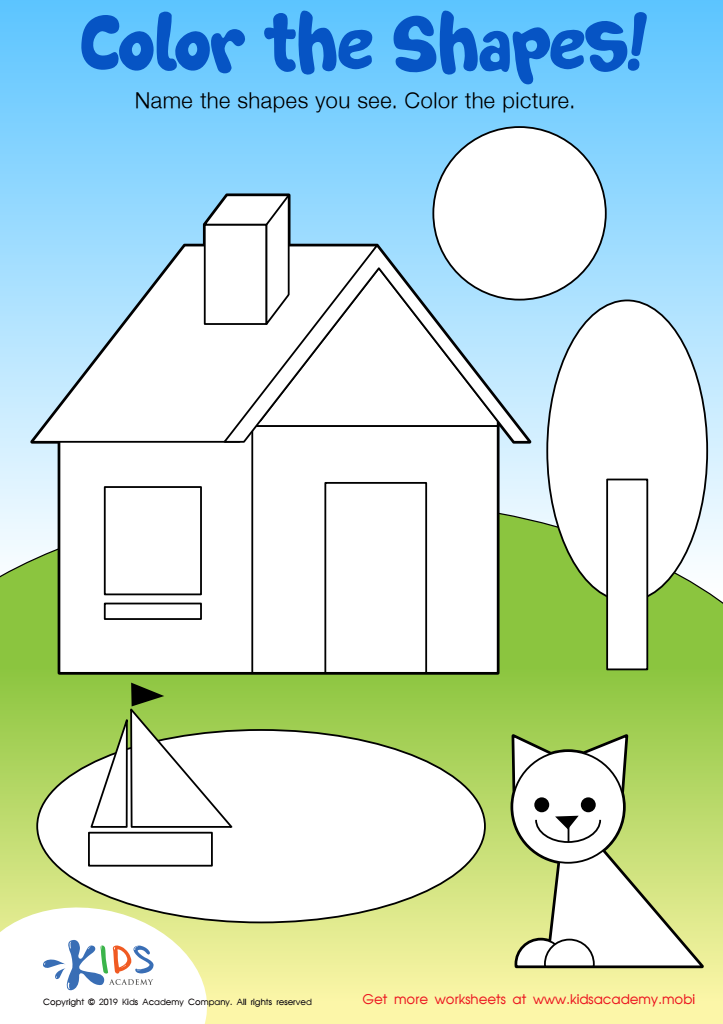

Color the Shapes Worksheet
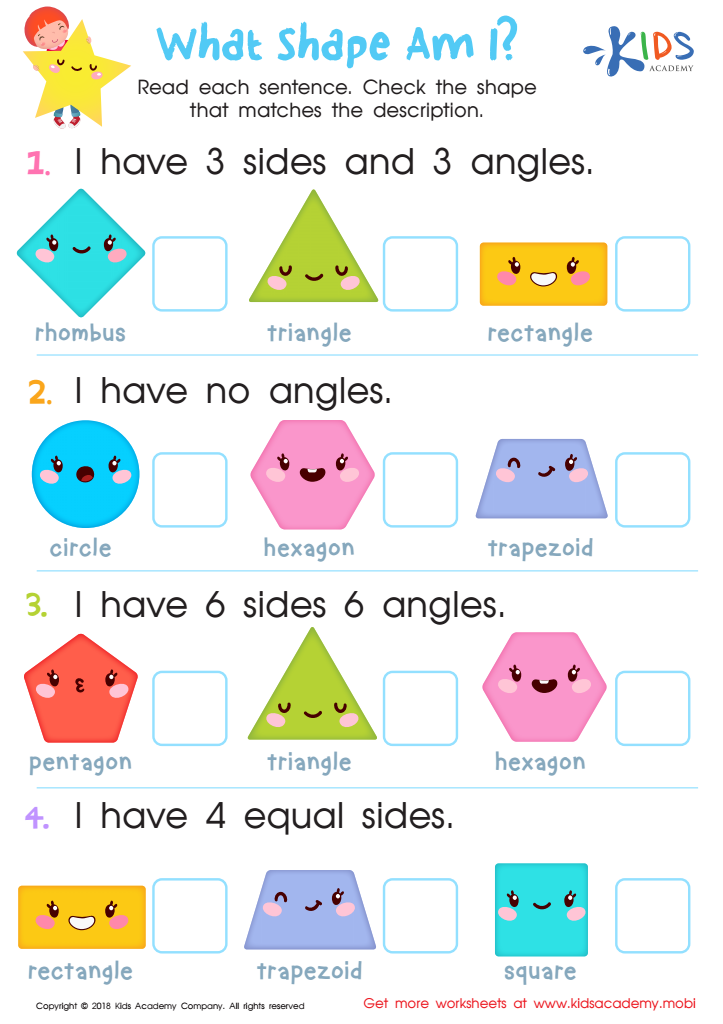

What Shape Am I? Worksheet
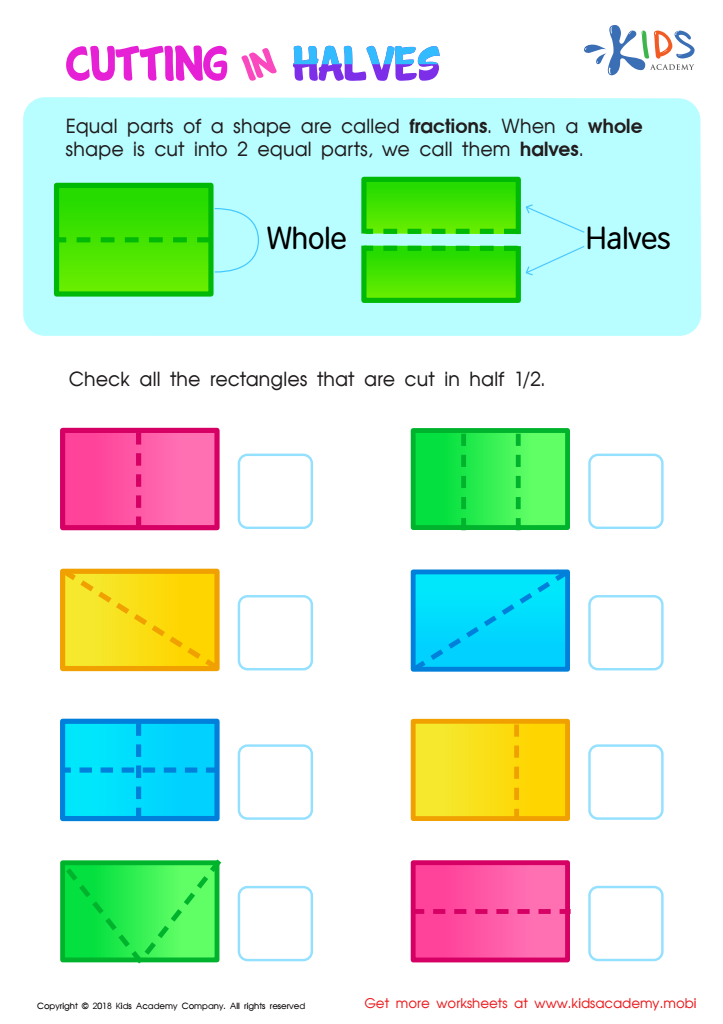

Cutting in Halves Worksheet
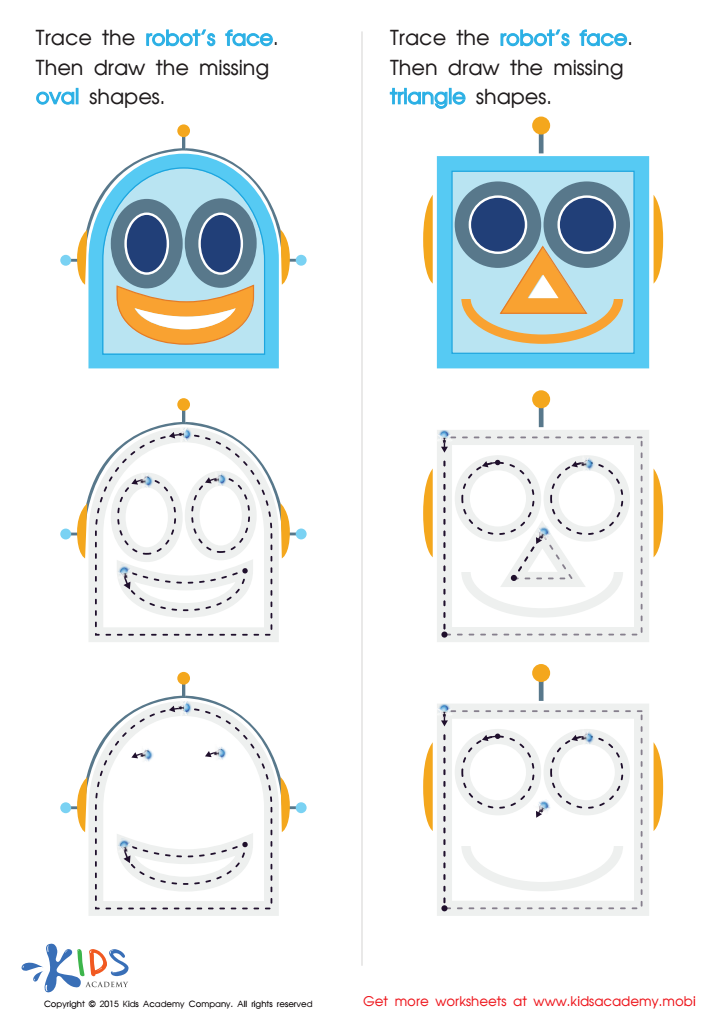

Drawing Ovals And Triangles with Fun Printable
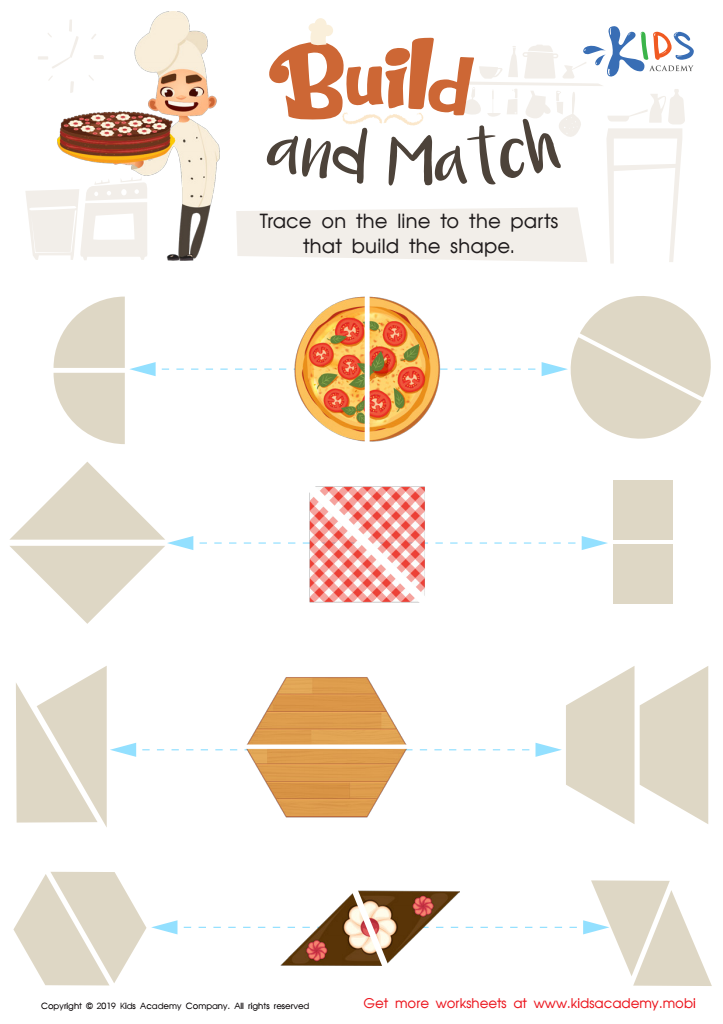

Build and Match Worksheet
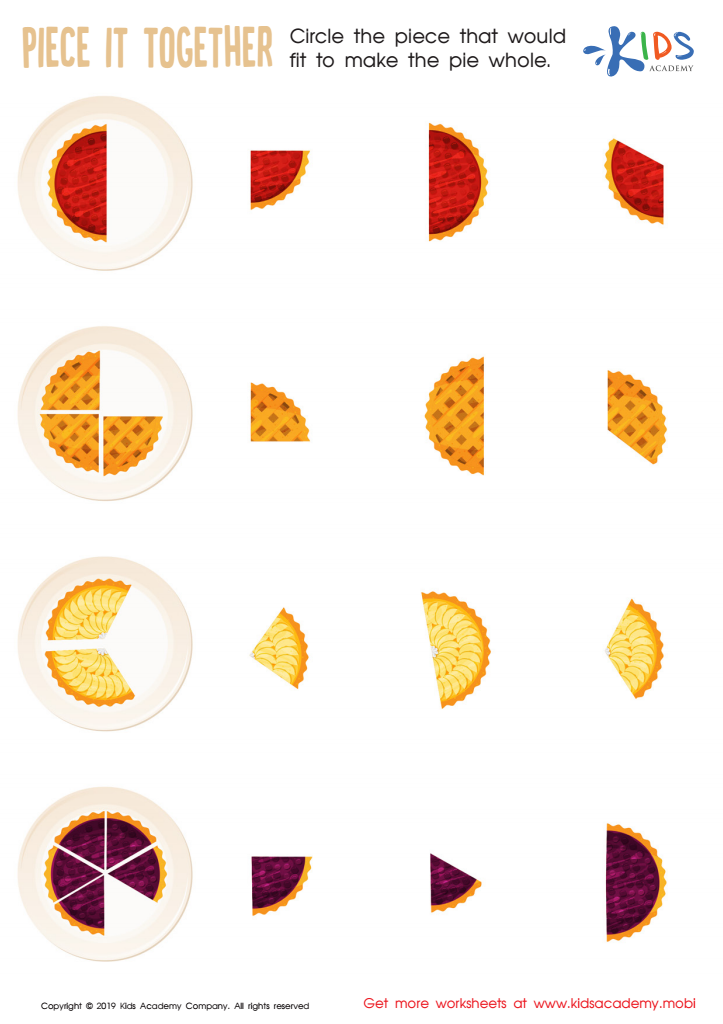

Piece it together Worksheet
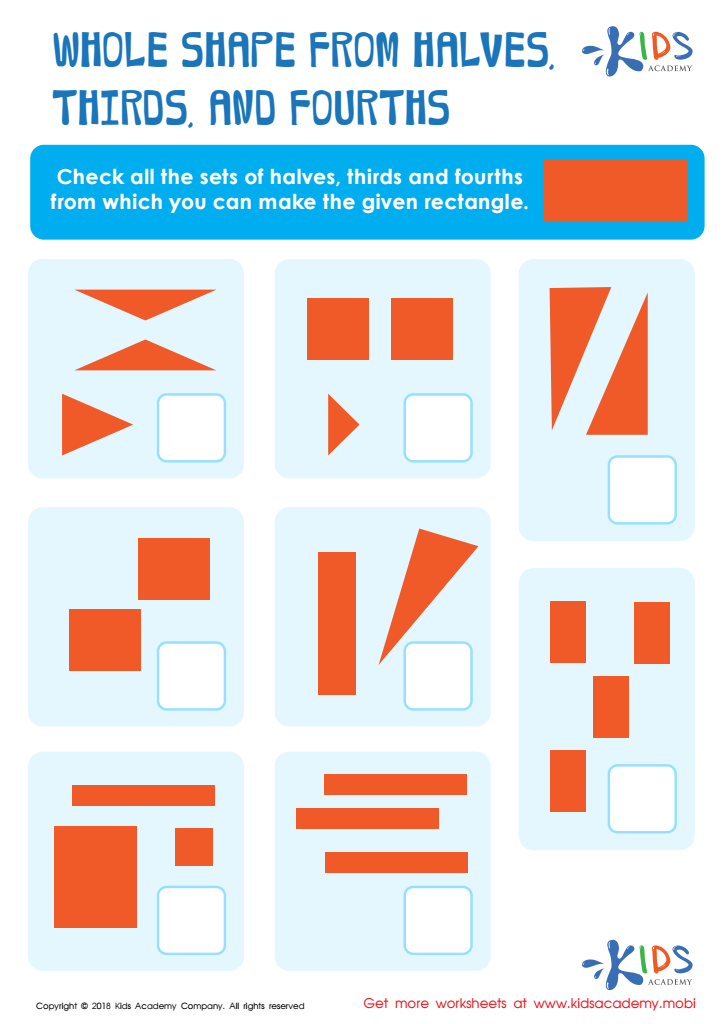

Whole Shape from Halves, Thirds and Fourths Worksheet
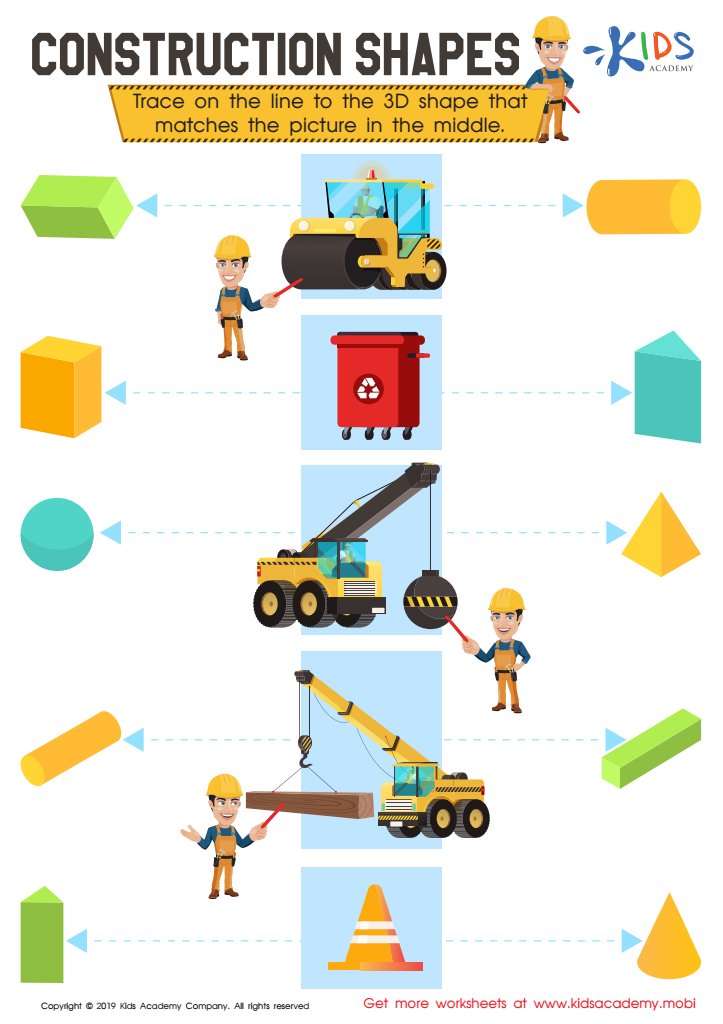

Construction Shapes Worksheet
Shape recognition and early geometry skills are foundational to a child's cognitive development and future academic success. For young children ages 3-9, engaging in these activities can bring numerous benefits.
Firstly, shape recognition enhances visual-spatial awareness. When children learn to identify and describe different shapes, they develop the ability to understand and navigate the space around them (for example, recognizing the difference between an open space and a blocked path). This is crucial for tasks ranging from reading and writing to more complex mathematics and everyday activities.
Secondly, early geometry skills promote problem-solving and logical thinking. As children manipulate shapes and understand their properties, they start to grasp geometric concepts like symmetry, patterns, and spatial relationships, all of which are essential for higher-level math and science.
Moreover, recognizing and naming shapes helps to build vocabulary and language skills. It provides children with words they need to describe the world around them accurately. This, in turn, boosts their communication skills and confidence in expressing themselves.
Finally, engaging with shapes can be fun and stimulating, fostering a love for learning. Using colorful, hands-on materials keeps children interested and engaged, making learning feel like a playful exploration rather than a chore.
Overall, prioritizing shape recognition and geometry for young children sets a strong foundation for a plethora of future academic endeavors and everyday tasks.
 Assign to My Students
Assign to My Students























